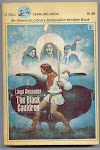Shakespeare's and others' portrayal of Richard as a hunchbacked, murdering monster was almost certainly born of propaganda by the Tudors, 15th-century usurpers of the British throne. Contemporary accounts of Richard's reign show him as a good king and brave soldier. This PBS program is worth watching, if they show it again.
I had two questions: 1) How did they know it was Richard? and 2) Where exactly is Bosworth? Contemporary accounts said that he was buried at a certain friary, and that's where the bones were found. And I found Bosworth on a Google map.
Josephine Tey's historic novel, Daughter of Time, debunks the Richard-as-monster myth, and is a very good read.
*
The LAC poetry group meets tomorrow night, and I'll probably read my Wizard poem.














1 comment:
I do want to see that show. My understanding is that they identified him using genetic samples from some of his family. Wikipedia says it was two "matrilineal descendants of Richard III's eldest sister, Anne of York." So they must have obtained some DNA from his remains. That isn't enough by itself, but they were able to roughly when the body was buried, and they also figured out what he would have looked like from the skull bones, and they were able to tell when he was buried. So the combination of when he died, what he looked like, and the fact that he was related in the right way to his distant family was enough (they think).
Post a Comment